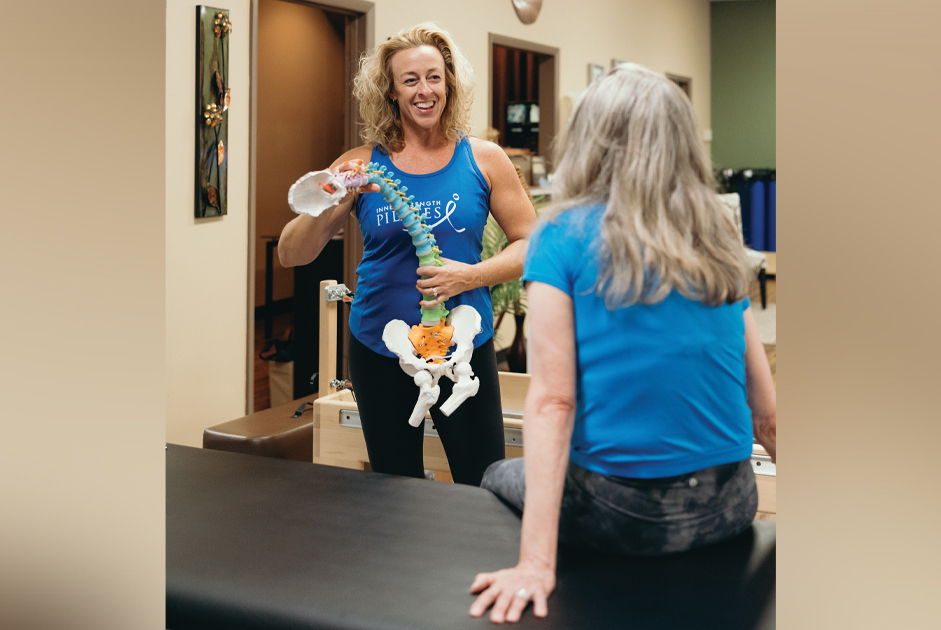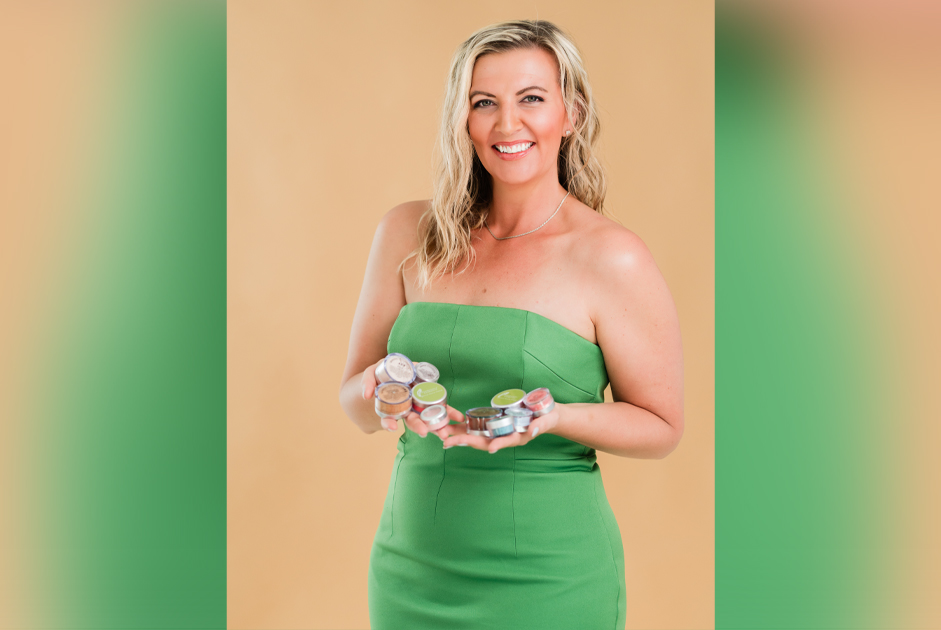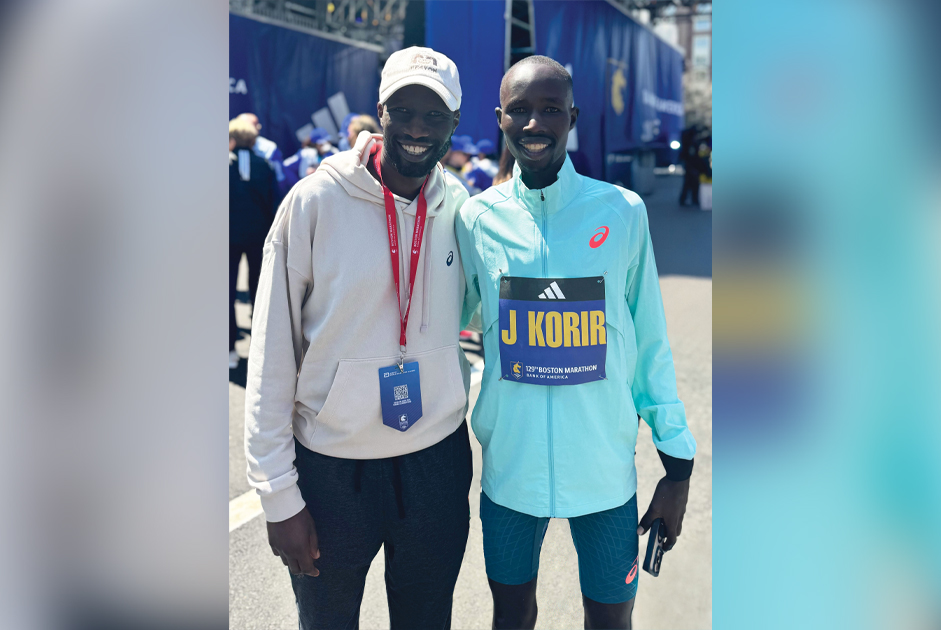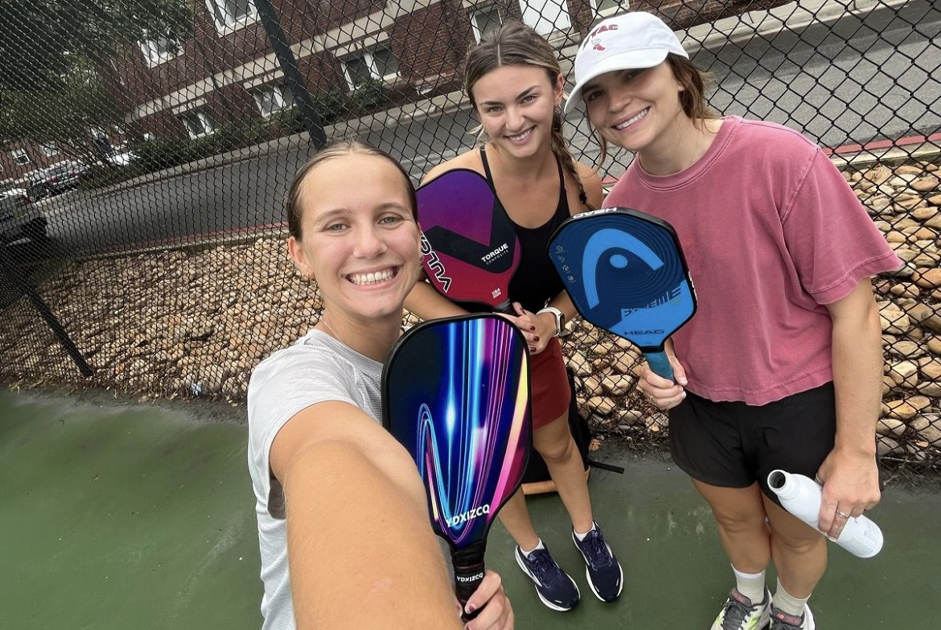by AMY DIXON, NCPT, OWNER OF INNER STRENGTH PILATES
photos by: MEGAN SMITH PHOTOGRAPHY
Have you received a diagnosis of osteopenia or osteoporosis?
At Inner Strength Pilates, we want our clients to have a foundational education about their bodies and how to safely handle the regular activities of their lives. We strive for our clients to be empowered to confront their health issues, have the skills to modify tasks as needed and understand that any exercise program they currently participate in will likely need to be modified. For best results, work with someone specifically trained in osteoporosis to help you get moving safely. At ISP, we have Healthy Spine classes designed for those with osteoporosis and other spinal issues. We adapt our classes to include the latest research to provide the best possible outcomes for our clients, helping our clients remain independent as long as possible.
To begin, you’ll have private sessions, during which we will prioritize education and how to best protect from fracture. You’ll learn why risky movements should be avoided, including bending forward, side bending and deep rotation. We will address pain and faulty movement patterns and navigate healthy spine strategies such as neutral spine and hip hinge. We know that movement is medicine. The key is knowing what movement is best for your body.
You’ve likely heard weight-bearing exercise is best, but where to begin? Your muscular system needs weight resistance to support the joints. Your skeletal system needs impact to stimulate bone growth. Dynamic balance work is crucial to avoid falls.
Strength train to improve physical function by incorporating strengthening moves that include pulling, pushing, squatting, hinging, reaching and carrying. Including these motions will ensure you address the whole body as you strengthen. The posture you carry into these movements is critical since it isn’t just the amount of weight that is lifted, but how the weight is lifted that determines fracture risk. Kyphosis (rounding of the upper back) often accompanies osteoporosis. Loading the kyphotic spine with weight will, at best, reinforce the kyphosis present and, at worst, risk fracture. Many factors influence the vertebrae’s ability to withstand load – the integrity of the discs, alignment of the vertebrae, the strength of the surrounding musculature and any degeneration present. We work to improve alignment first, then strengthen from there.
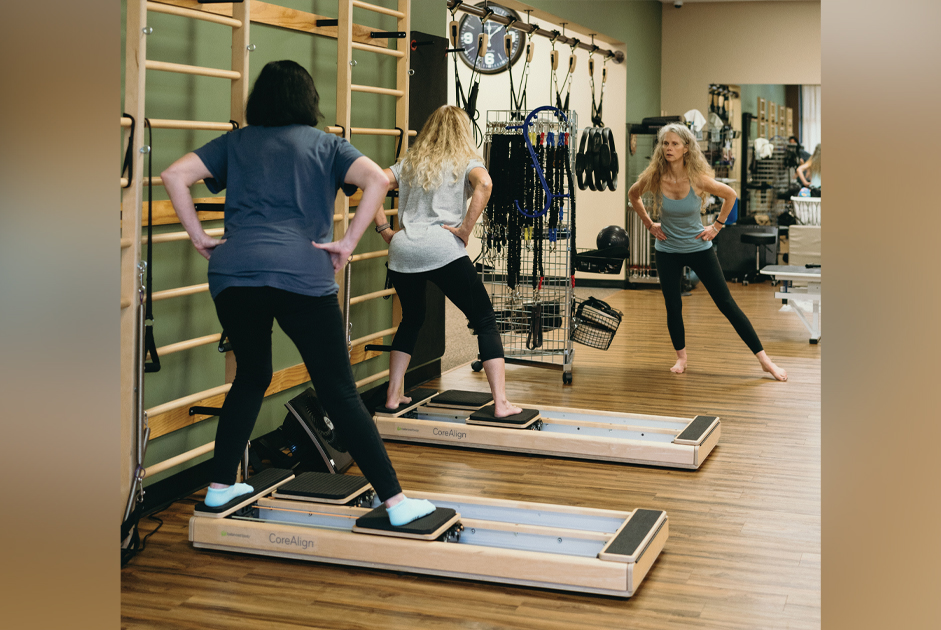
Pilates can be a greatly beneficial form of exercise for individuals with osteoporosis, as it focuses on strengthening core muscles, improving posture, improving balance and enhancing flexibility. Pilates uses springs as resistance training, as the spring is under graduated tension as it is stretched. The process loads the tissues safely to avoid injury, using controlled movements, before increasing intensity and range of motion. We strengthen through joint range of motion so that you are strong within your flexibility.
High intensity impact training research shows the best results to stimulate bone growth in post-menopausal women. Impact training at an appropriate intensity for your fitness level needs to be determined. We strive to strike a balance between the impact needed to create bone growth while moving at a pace for the safety of the individual to reduce the fall risk. Those unable to perform high impact movements can benefit from the simulated high impact of our cardio classes and vibration plate.
Dynamic balance should also be included in your routine, as fractures often happen when one loses balance and falls. Recovering from a misstep or being able to change directions quickly, such as when a pet runs in front of you, is imperative. Fractures following a fall statistically lead to decreased mobility, increased pain, loss of independence and loss of physical and social capacity. Our number one rule – stay on your feet!
While any physical activity is encouraged and helpful to some extent, bone building activates under force and load. Low impact, low intensity exercise certainly has its place such as walking, water aerobics or yoga, but make sure to additionally include osteoporosis-specific work several times weekly.
With factors in place such as proper nutrition, activity levels, supplementation based on testing, hormone optimization based on need and added stimulation, the environment is set to grow bone. Set up habits that cultivate growth in each of these areas. For a multi dimensional approach, you’ll be best suited to have a team in place from a holistic perspective. Though the goal is to improve bone density, maintaining density is still a win.
